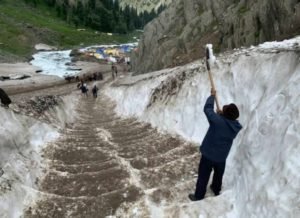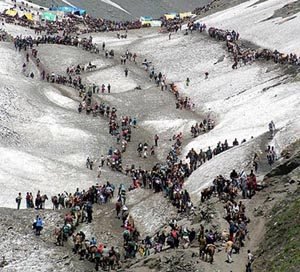
“Yes, I understood the technique, but what is the philosophy of this method?” an elderly farmer asked us after we introduced to her and her husband an agro-ecological method of growing rice. This query made me realise the seriousness with which people look at land. That is, not all people blindly follow instructions in which they are told they will get this and that benefit; particularly, when it comes to a vital resource in their hands. I say vital because people live off land; they depend on it for food, fodder and livelihood. In this regard, if we may ask, what should be the philosophy of tilling the earth? Is it just an act of exploitation of natural resources like soil and water? Or must it be an act of connecting with the life in the soil, of engaging with proper practices ensuring the health of the soil and with a belief of “good for good”, hoping for some rewards in return—an act of caring, love and spirituality?
In this regard, a system rooted in the principles of sharing of available resources among different components of the ecosystem—individuals, communities and other species—is a system where not much can go wrong. For every creature constituting the ecosystem has a balanced share in the available resources, and only when this balance is maintained can we expect the cycles of nature, vital for the survival of life on the planet, to run in harmony. These include the water cycle, geochemical cycles, nutrient cycles and so on. In how many different ways have we disrupted these natural cycles and what consequences are we going to face if our actions remain unchecked?
When we talk about a particular place or region, although the consequences of the disruptions in the natural cycles or the ecological balance are mainly borne by the natives of that place, the underlying causes may also be significantly affected and informed by the actions of non-natives. Whereas, for example, disruptions like land-use change and land-grabbing lead to a decrease in the availability of natural resources, the acts leading to contamination and pollution has the potential to affect the quality of the whole available resource base. The former lies, mainly, in the domain of the responsibility of the native, and a significant part of the latter is a consequence of the interactions of the non-native, the tourist, with the local ecosystem. In some cases, it no longer remains just a significant part, but becomes an ugly monstrosity. An example of this is the pilgrimage to the Amarnath cave in Kashmir, where more than 600,000 tourists visit an ecologically fragile area in the middle of the summer every year. Compare this with the figure 6000, the population of Pahalgam, the town nearest to the cave. There is a hundred-fold spike in the human presence within a span of weeks, which is bound to wreak havoc on the ecology of the place. The area around the cave shrine is also home to the Kolahoi glacier, which is the main source of Lidder, a tributary of the river Jehlum, the lifeline of Kashmir’s agriculture. Kolahoi became the scene of a tragedy last year in September (a few days after the completion of the pilgrimage) when a group of nine mountaineers were caught in a rock fall on the glacier. Two of them were killed as a result. The contribution of the high density and high frequency of human interference in the region in the months preceding the tragedy cannot simply be ignored.

The residents of a particular region have a regular correspondence and a permanent relationship with the ecology of that region. A tourist, on the other hand, has a temporary correspondence with the ecology of a place he or she takes a tour of; but this correspondence has the potential to have irreversibly toxic effects on the ecology and, therefore, the residents of that place. Hence both the residents and the tourists have responsibilities when it comes to maintaining the ecological balance of a place that is a tourist attraction. While there are some areas where the responsibilities of the two overlap, the responsibility of the tourist assumes greater importance because it is a responsibility which comes without any accountability, natural or enforced, as things stand. It is the ecosystem and the resident who has a regular give-and-take with that ecosystem that bear the brunt of the misdemeanours of the tourist. This leads us to the concept of ecologically-responsible tourism. There are individuals and organisations that have taken initiatives to keep tourism as eco-friendly as possible but these initiatives must initiate endeavours on a global scale. In order to get concrete results there needs to be a sea change in the way the tourism industry and the governments all over the world conduct themselves.
Let’s take the example of Kashmir where, on the one hand, free movement in the form of access to roads and railways is being denied to the people who live there, on the other hand, a wanton destruction of fragile ecosystems is being carried out to facilitate the movement of tourists. A photo that got popular on social media recently and showed a staircase made by digging up a glacier in the mountains at Pahalgam amply illustrates the point. Every step a tourist takes to climb a stair on that staircase to heaven is a step that tramples upon the basic needs of the people of the valley. While tourism does provide livelihood to many, this kind of tourism which tampers with our water sources and pollutes water bodies that form the backbone of our food system leads to a degradation, in quality and quantity, of the livelihoods of a larger number of people than it provides for in the first place. A tourist activity that leads to ecological degradation at such a large scale must be put through checks and controls instead of letting the political number-crunching guide its path. There needs to be a clear distinction in place between tourism and activities that are a health hazard to both the delicate ecology and the residents of the valley.
There is a also a need to introduce strict laws against certain practices, which can ultimately help reduce the ecological footprint of the tourist industry, keeping in view the fragile ecological situation of Kashmir. These include making the use of plastics in the ecologically fragile areas an offence liable to be fined, banning non-local heavy vehicles in tourism, and imposing an ecological tax on all tourist activities, which would vary from place to place depending on the ecological condition of the place. Also, and this may sound absurd, “putting places on the tourism map” activity needs to be paused for a decade or so in Kashmir. We have seen in the past how places that were “put on the tourism map” witnessed a rapid ecological degradation. However, initiatives in this regard can also be taken on the lower level as well. On an individual or community level, campaigns need to be undertaken to reduce the negative externalities of tourism. These can include the setting up of waste management cooperatives where organic or food waste could be turned into compost and plastic waste could be recycled and converted into packaging material for, for example, the same compost! This is just an example. There are many possibilities to set things right, even when it is not us who have set them in disorder!

While I was in the middle of writing this piece, a friend of mine sent me a few breathtaking photos of a meadow up in the Pir Panczal Mountains. My initial reaction was that of amazement at the raw beauty in those photos and I told him, sarcastically,“Let us put this place on the tourist map so that we can destroy it quickly!” I won’t name the place here because the authorities might put it on the tourist map and create some more stairways to heaven!


